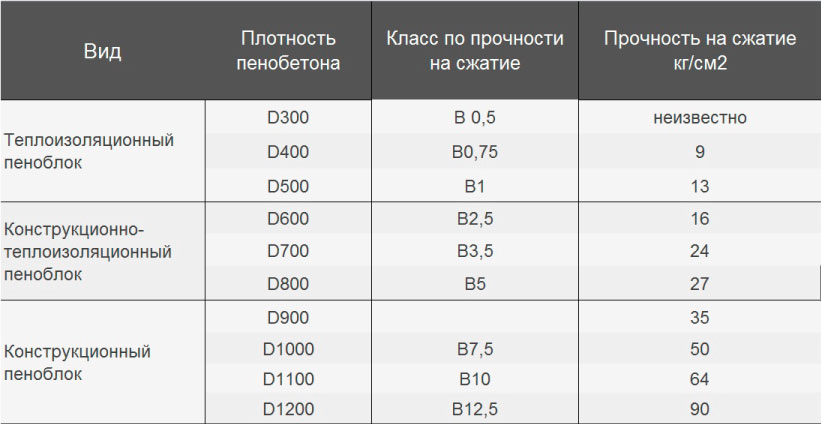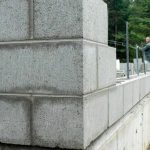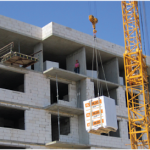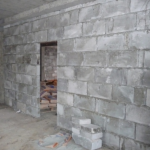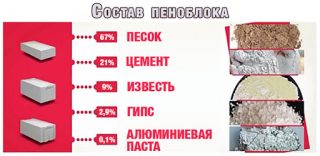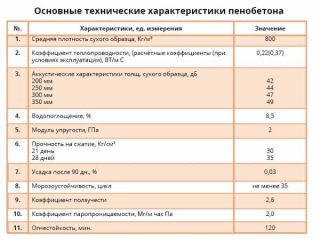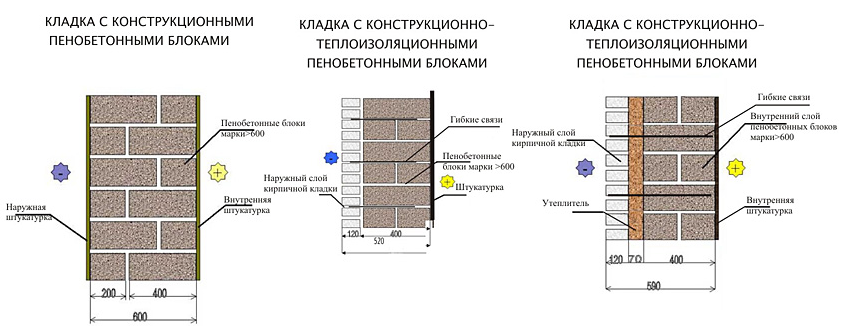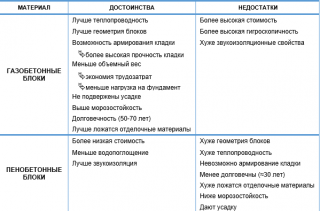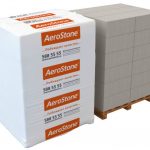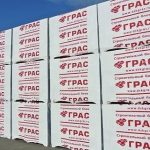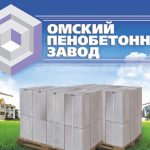Lightweight concrete blocks have become widespread in the construction of private houses, summer cottages and utility rooms. The material has several advantages at once, so it is recommended to pay attention to its characteristics.
Description of foam blocks
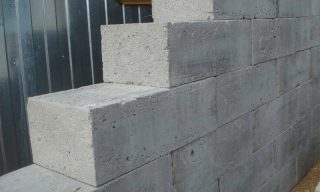
In the production of foam concrete are used special substances that contribute to the foaming of the solution... In this case, cells with air are formed inside, and the total volume of the mixture increases. The blocks are large, but weigh much less, which saves on construction costs.
Foam concrete blocks can be distinguished on the following grounds:
- the gray color that cement gives;
- rough texture;
- usually made in the form of a parallelepiped.
The material has a characteristic feature - it stays on the surface of the water for some time and does not sink, since the pores inside have a closed structure.
Varieties and scope of foam concrete
The quality of foam concrete is determined according to GOST. If only technical conditions are indicated (TU), therefore, the manufacturer himself produces blocks using the available capabilities. It is not a fact that they will meet the standard and meet all norms.
To obtain foam concrete of various qualities, manufacturers change the ratio of components in the mixture. For example, to make blocks for load-bearing walls, you need to add less sand.
Types of foam blocks by density:
- Structural - designed for the construction of load-bearing walls, foundations and plinths. This includes brands D1000, D1100, D1200.
- Structural and thermal insulation. Suitable for load-bearing walls and internal partitions. D500, 600, 700, 800, 900 brands.
- Heat insulating. The blocks are used for thermal insulation of walls in an additional circuit. D300, 350, 400, 500 brands.
These types differ in terms of heat conductivity... Structural ones have lower thermal conductivity than baked clay bricks. Structural and heat-insulating blocks differ in average indicators. The third variety in terms of heat conductivity can be compared with a tree.
There are differences by manufacturing method: These are shaped and cut blocks. Cut ones are more expensive, have smoother edges, which allows for high-quality joining.
Foam blocks are also distinguished by strength class... This is the value by which it is determined what kind of load the block can withstand.For porous concrete, the optimal indicator is 0.7 - it is also indicated in the building code of the SNiP.
Heavy foam concrete has proven itself well in the construction of foundations and load-bearing external walls. After the obligatory shrinkage, the walls inside did not crack, which can be seen from the state of the decorative plaster.
With the help of large partition blocks, you can quickly partition a room, while the room will not have a lot of dust and dirt.
Lightweight aerated concrete used for insulation of roofs, floors, exterior walls. In multi-storey buildings with poor sound insulation, thin porous panels can be mounted on walls and floors.
With the help of lightweight heat-insulating foam blocks, corner apartments in multi-storey buildings can be well insulated. The weight of the products is small, so they will stick to the walls.
Manufacturing technology
At home, it is best to use the foam generator method.
To obtain the required specific gravity of foam concrete, the mixture must be compiled from certain ingredients:
- Portland cement grade M400 or M500 - the higher the grade, the better the performance properties of the finished material;
- expanded clay or fine sand - expanded clay is warmer, therefore, it is recommended to use it for building a house;
- foaming agent - you can also make it yourself;
- water at room temperature - it is necessary to observe the proportion of cement and water 10: 4.
- Portland cement 3.2 tons;
- 2 tons of sand;
- foaming agent from 10 to 15 liters;
- water 1.3 t.
- concrete mixer - the size depends on the expected amount of mortar;
- foam generator;
- compressor;
- separator;
- a device to measure the right amount of water;
- pipeline for the ready-made solution, through which it will be distributed into molds.
After hardening, you may need a grinder to cut blocks if the form is too large.
Documentation, certification
Building materials must pass full certification cycle:
- for compliance with quality;
- firefighter (for flammability);
- sanitary;
- fire test certificate.
The quality must be confirmed by the presence of appropriate components that guarantee the durability of the building made of this material.

Specifications
To choose the right building material, you need to know its technical characteristics, as well as its purpose.
Density
Density is the ratio of the mass of a substance to its volume... With regard to concrete blocks, this value significantly affects the grade and is designated by the letter "D".
The higher the density and strength of the foam blocks, the worse the thermal conductivity indicators, therefore, different technical indicators of the material are chosen for different purposes.
Insulating blocks must not be used to build foundations or load-bearing walls. Lightweight porous material will not withstand the weight of the floors and the structure as a whole.
Binder
- cement;
- lime;
- gypsum.
Gypsum of low grades is especially unique in this respect.When replacing it with Portland cement, a material with other technical characteristics and advantages is obtained:
- hygroscopicity decreases;
- frost resistance increases;
- the quality of the block surface is improved;
- less scrap due to chips.
The production process is accelerated 10 - 12 times, since gypsum-based blocks dry quickly, for this they do not even need a strict molding.
Standard sizes
The sizes of foam concrete blocks are different. It depends on the destination. Products for the foundation and load-bearing walls are produced in other sizes in order to strengthen the strength with the help of the mold.
By height-depth-length standards (cm):
- internal wall bearing 30x20x60;
- internal partition walls 30x10x60;
- for load-bearing external walls 30x40x60;
- for non-bearing 10x30x60.
For outbuildings, you can make blocks with your own hands that fit the project, but are not standard from the point of view of GOST.
Foam block weight
The weight of the foam block and its density are directly related: the higher the density, the greater the weight of the product, since the size and number of air cells decreases.
Humidity mattersas the material can absorb water and increase its weight. One block, depending on its size and density, can weigh from 8 to 47 kg. Structural concrete has a lot of weight, since its density is higher so that the material can withstand loads. Insulating concrete has a low weight, since it is highly porous and the main volume is occupied by air inside.

Color
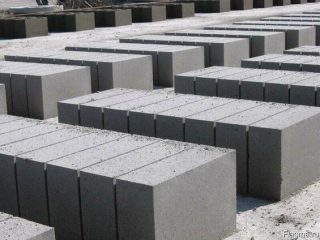
The color of aerated concrete is usually light gray if standard proportions of raw materials are used. You can get a lighter shade by using gypsum or lime.
Color is the main difference between a foam block and a gas block. Aerated concrete is white.
Foam block grade
After production and cutting, the foam blocks are sorted by quality. To the first grade include products with ideal geometry, they fully comply with GOST. Products of the second grade may have minor chips at corners or gouges in the surface. In general, this does not affect the quality, since the wall blocks will still be covered with plaster, which will hide minor defects.
Features of stacking and fasteners
When using foam blocks, there is a problem of fastening. The composition of foam concrete, its strength is different. Fasteners cannot adhere well to the cellular structure; moreover, the pores have very thin walls that break, the material crumbles.
For fixing foam concrete blocks special dowels are usedwhich prevent the fastener from falling out.
Also available wide-thread nylon dowels... Nylon further enhances the bond to concrete.
A regular nail dowel does not need to be screwed in - it has spacers at the end that make it suitable for porous material.

Which is better: aerated concrete or foam block
The tensile strength of aerated concrete is 2 times higher, therefore, it is more often used in capital construction. In addition, with a good density, gas blocks have fewer defects and rejects, and are better transported.
The cost of gas blocks in comparison with foam blocks is higher, which is due to the above advantages.
Leading manufacturers
The more serious the company producing building materials, the more its product range and the higher the quality.
Foam concrete wall blocks are produced several companies in Russia:
- Alta block. Provides foam blocks of various densities - for load-bearing and non-load-bearing structures, as well as sizes, so you can choose a batch that is suitable for an individual construction project.
- Omsk foam concrete plant produces high-quality products in demand on the building materials market. In order not to buy a fake, it is recommended to contact the dealers of the plant by phone numbers listed on the website.
- MARM - plant of foam concrete blocks. It manufactures products reinforced with basalt fiber, which significantly increases strength indicators.
- Aerostone - the enterprise is considered the largest producer of foam blocks, as it produces very large volumes of products per year.
- Grasse company - a manufacturer of foam blocks of various modifications, moreover, a well-known developer in the Moscow region who uses its own products.
You need to choose foam blocks in a company that is located closer to the construction site. This will reduce shipping costs.

